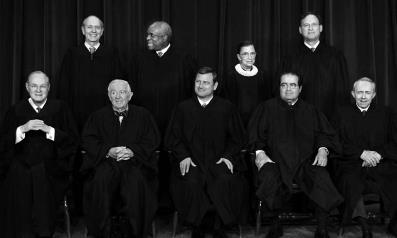The Roberts Court (2005–present)Decisions |
How did the Roberts Court change the law of public employee free-speech rights? |
The Roberts Court changed the Supreme Court’s jurisprudence on employee free-speech rights with its ruling in Garcetti v. Ceballos (2006). Previously, the U.S. Supreme Court had applied the following test: Public employees have a First Amendment right to speak on matters of public concern as long as their free-speech rights trump their employer’s right to an efficient, disruptive-free workplace.
Under the old rules, it appeared that Los Angeles deputy district attorney Richard Ceballos had a good claim since he spoke out on a matter of extreme public importance—the veracity of law enforcement officials. Ceballos had written a memo in which he questioned the honesty of a sheriff deputy’s comments made for a search warrant affidavit. Ceballos eventually claimed that, as a result of exposing this wrongdoing by the law enforcement official and other statements, he was demoted.
The Roberts Court, by a narrow 5–4 vote, carved out an important exception by ruling that public employees do not have First Amendment protection for statements that they make as part of their official job duties. The majority, in an opinion written by Justice Anthony Kennedy, determined that when employees engage in such work-related expression, they are acting as employees subject to discipline, not as citizens entitled to First Amendment protection. Kennedy warned that employers must be able to operate and conduct business without turning every dispute in the workplace into a constitutional concern.
The dissenters warned that the Court’s decision could have harmful consequences for those employees who blow the whistle on government corruption and could be harmful to the public, who potentially had lost an important source of information.

